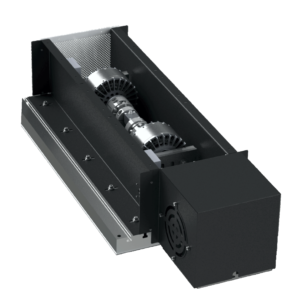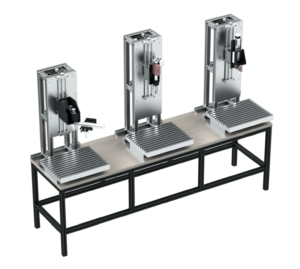Portfolio
Selected Case Studies
Finished Projects
Gimbal Patron [in progress]
The gimbal is a two-axis positioning device used for earth observation and data connection. The gimbal’s location in the stratosphere allows the gimbal to be used geostationarily with a high level of coverage. The Purspose of divise is to stabilized the movement, allowing accurate pointing and tracking. This technology is essential for environmental monitoring, disaster management, and telecommunications.
Gimbal Odysseus
Fully covered design of our gimbal is suitable for use in various weather conditions. Adaptable to helicopters, fixed-wing aircraft, maritime, and ground-based applications. Surface treatment is resistant to corrosion, salt, humidity and low temperatures.

Parameters:
- Azimuth: n×360°
- Elevation: +10 ° – 180°
- Positioning speed: 0-18° sec
- Weight: 9 kg
- Operating temperature: -30 to +70°C
- Storage temperature: -55 to + 85°C
- Input: 18 – 38 VDC, max. 2 A (6° with temperation)

- Control Box: Ø 236 x 50 mm
- Communication protocol: RS 485
Norms:
- RTCA DO 160 * In progress
- Protection rating: IP68
Motorstand
Design and manufacturing of load test equipment for testing and development of a new generation of frequency converters.
Continuously adjustable load designed as a back-to-back (motorgenerator) testbench with two BLDC motors with an output of
2×80 kW, to adequately simulate real operating conditions.
SCOPE OF WORK
- Concept design – feasibility study
- Research, selection, and verification of suitable components – power, measuring and control
- Design and verification – FEM, modal analysis of the structural design
- Design and manufacturing drawings
- Manufacturing and installation of the device
- Commissioning
- Technical documentation, operation manual
 MAX. TORQUE: 400 Nm
MAX. TORQUE: 400 Nm
MAX. SPEED: 2,800 RPM
POWER: 2×80 kW
Testing Station for Automotive
SCOPE OF WORK
- Cyclic testing of switching elements
- Twist/rotational motion including rotation angle
- Tensile and compression test
- Measurement of analog and digital signals with selectable levels
- Measurement of state variables, including bus decoding
- Measurement of button oscillation and response
- Cyclic and reliability tests with statistical evaluation
- Electrical strength tests on a stressed specimen
- Implementation of special communication protocols for selected sensors

COMPLIANT WITH SELECTED STANDARDS
- Safety requirements for electrical, measuring, control, and laboratory equipment
- Safety of machinery
- General principles for design
- Risk assessment and risk reduction
Selected Standards
RTCA DO 160
Environmental Conditions and Test Procedures for Airborne Equipment
ISO 61 010
Safety requirements for electrical, measuring, control, and laboratory equipment.
ISO 12 100
Safety of machinery, General principles for design, Risk assessment and risk reduction.